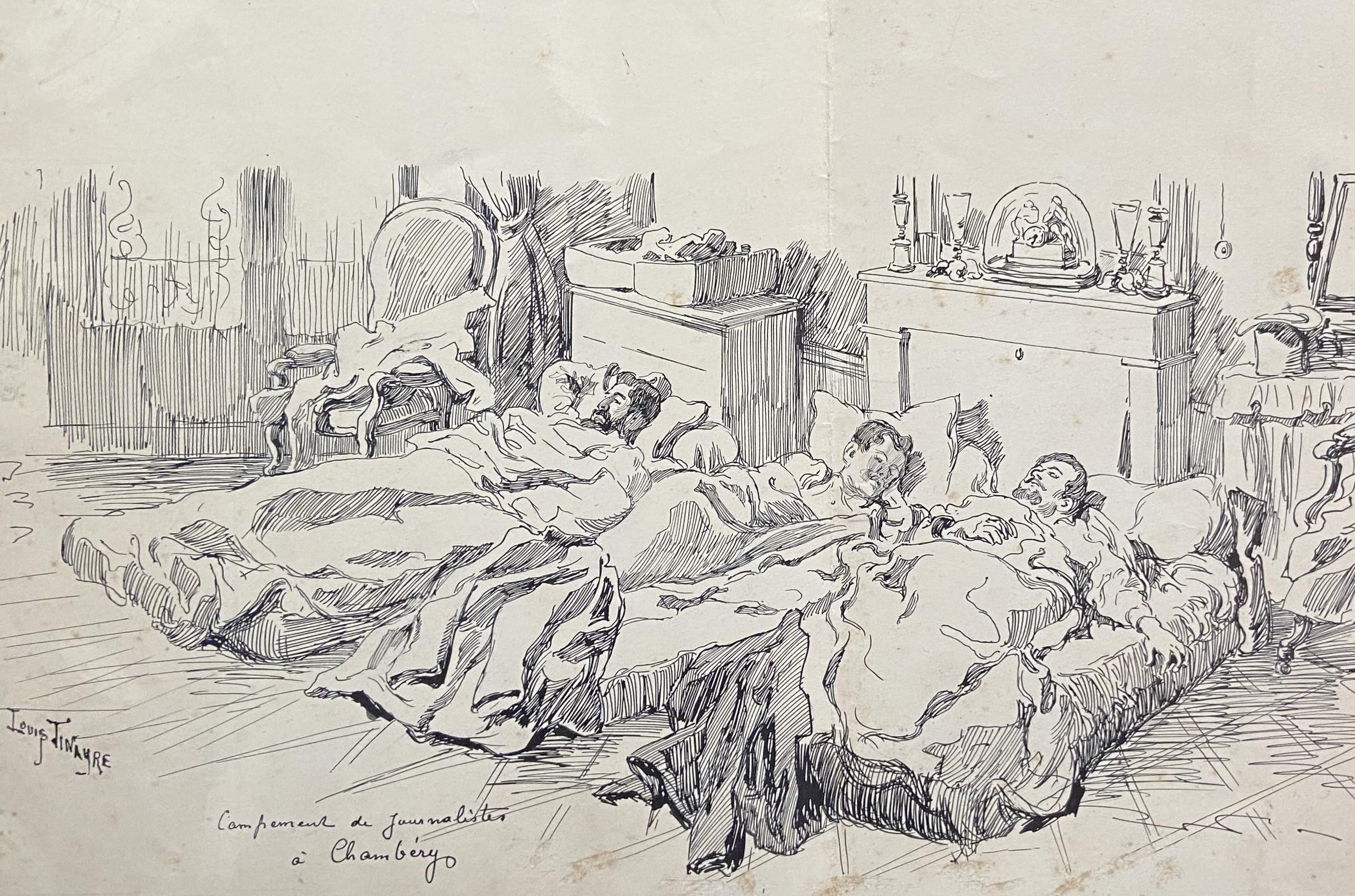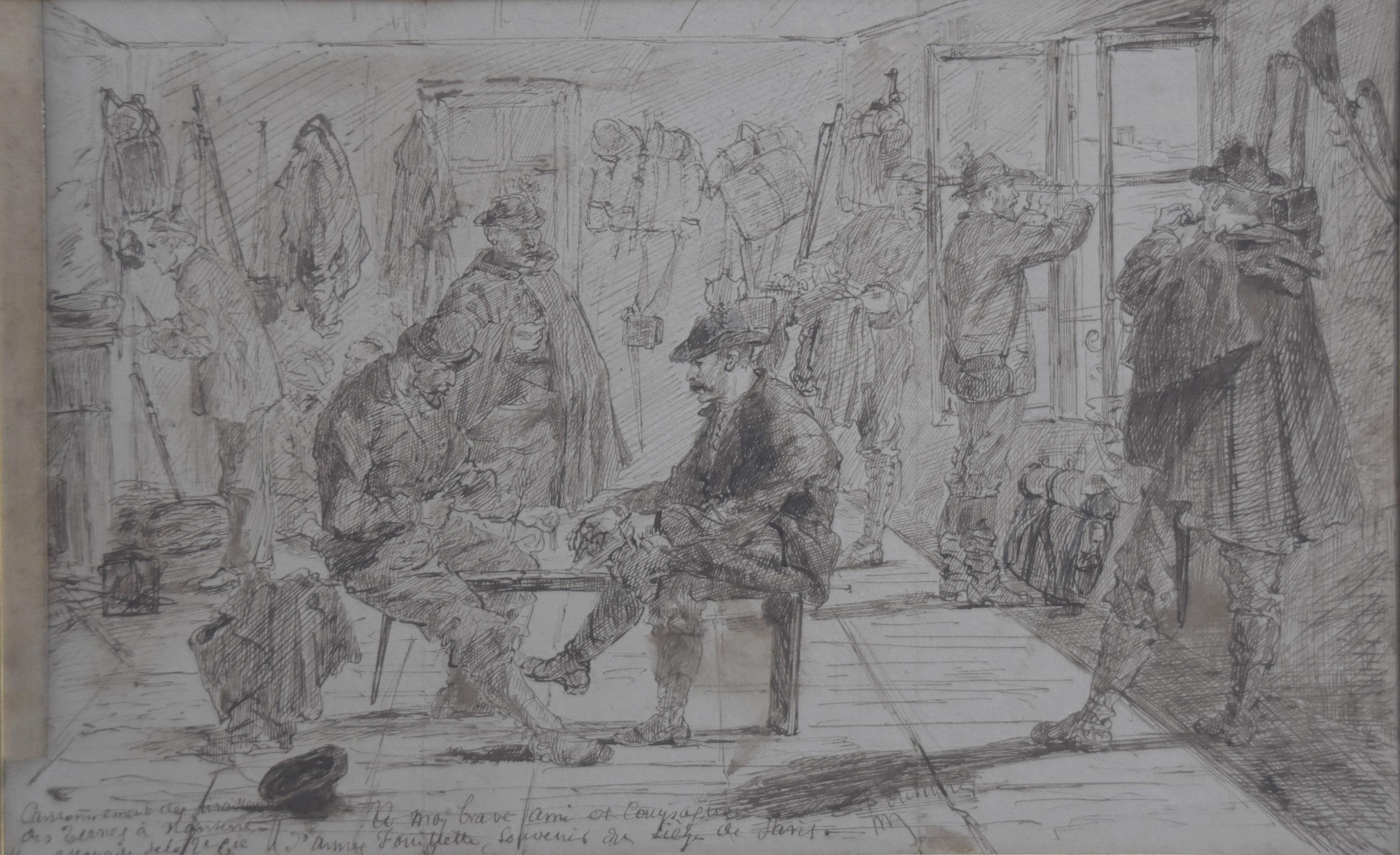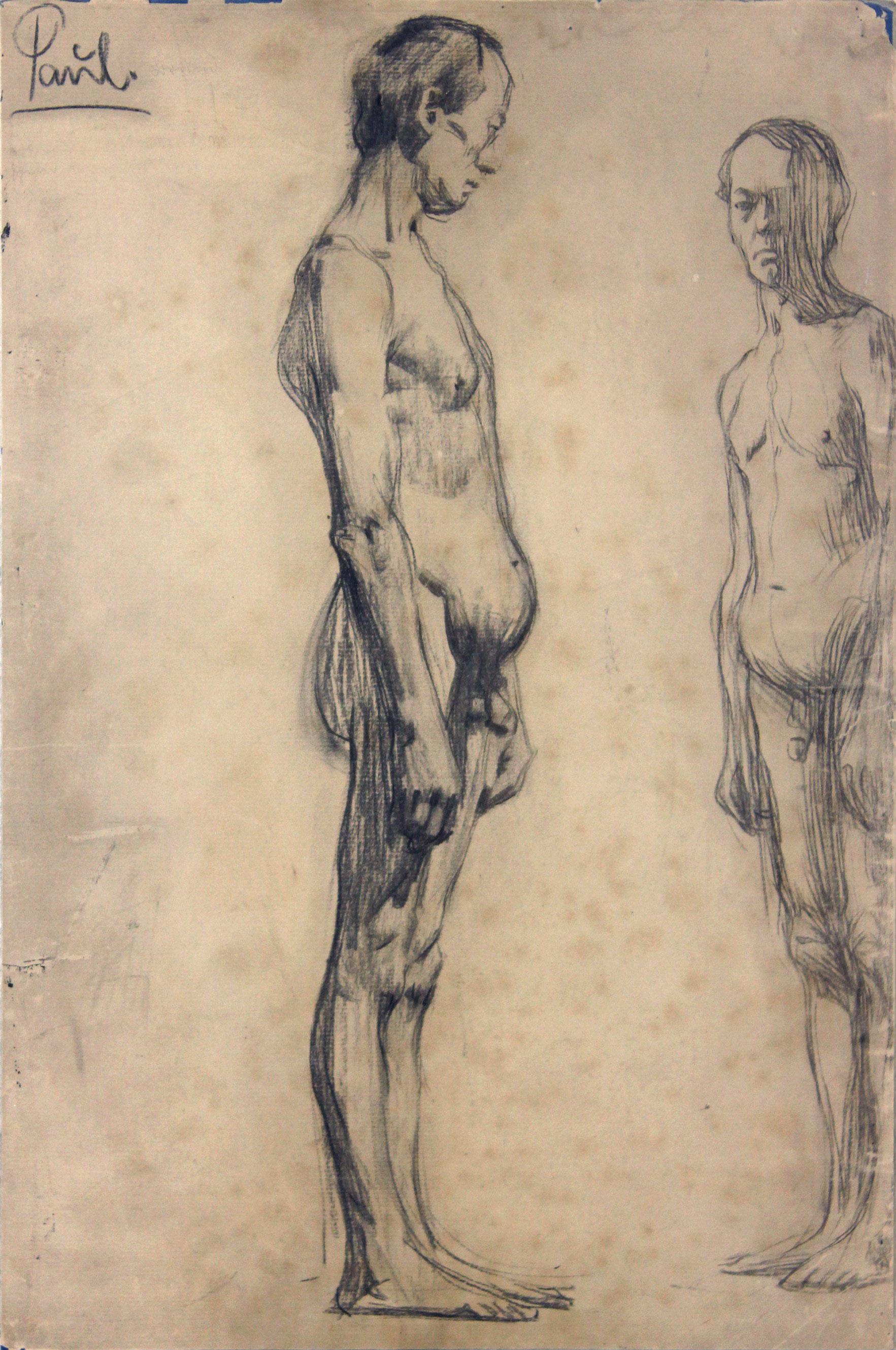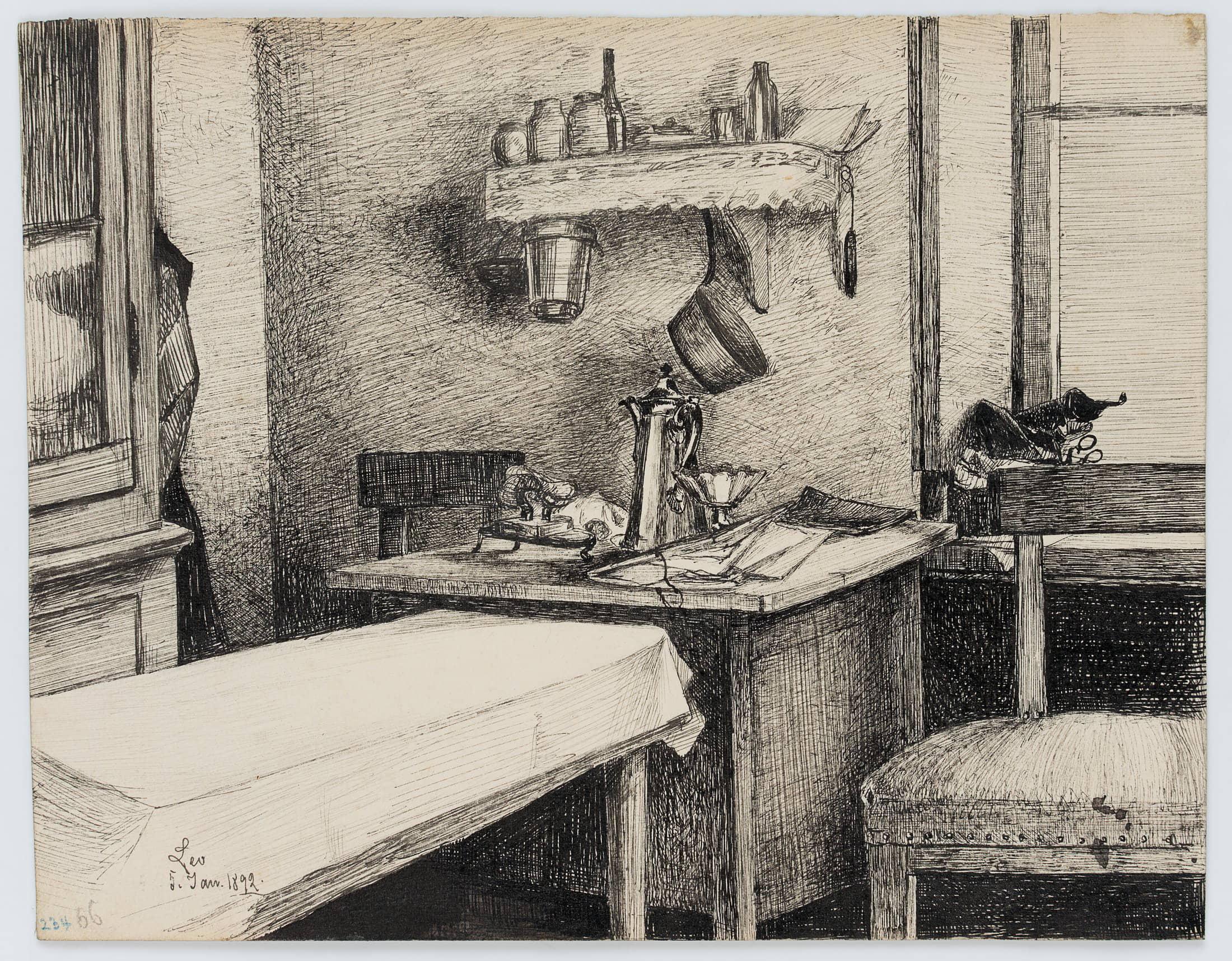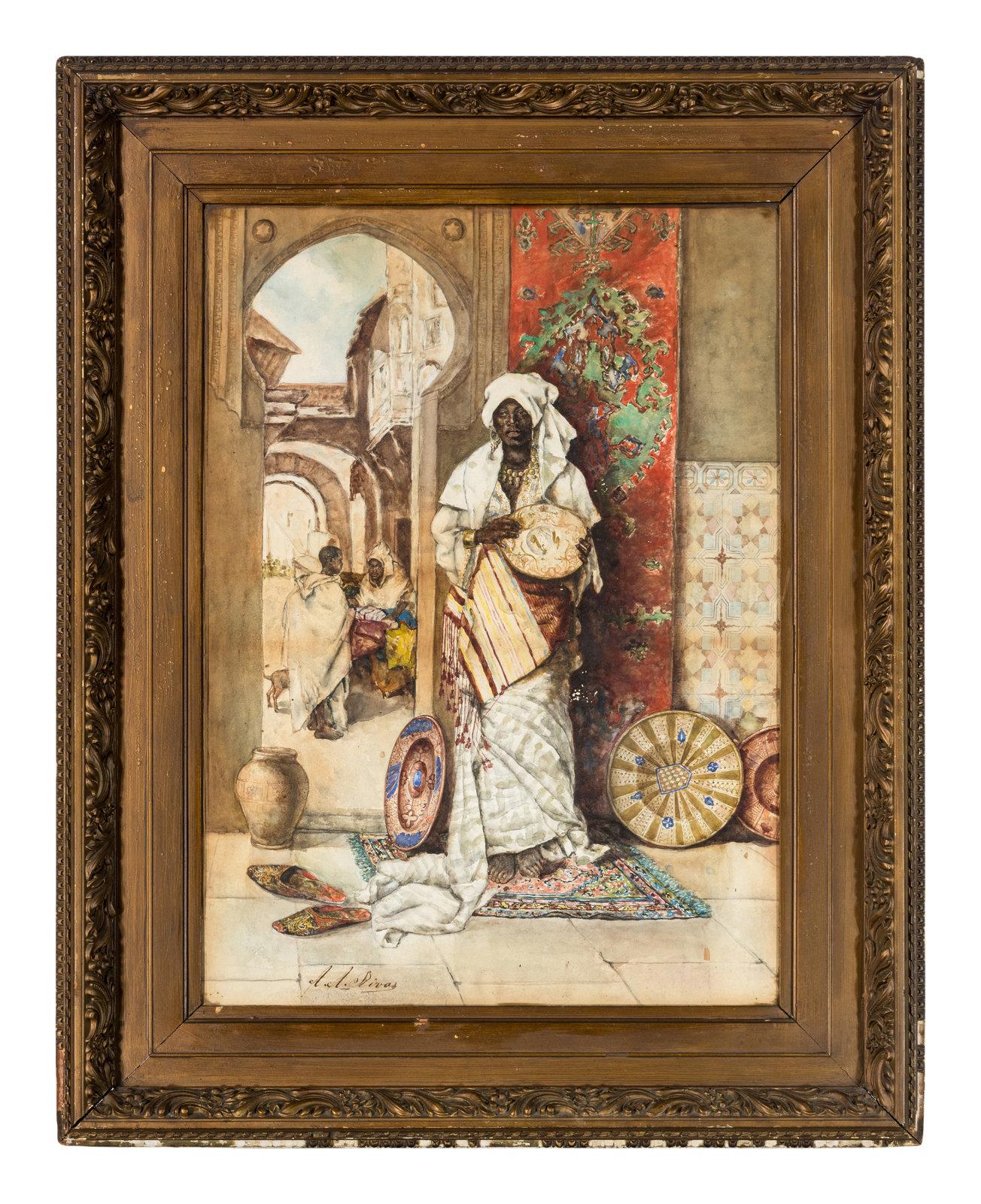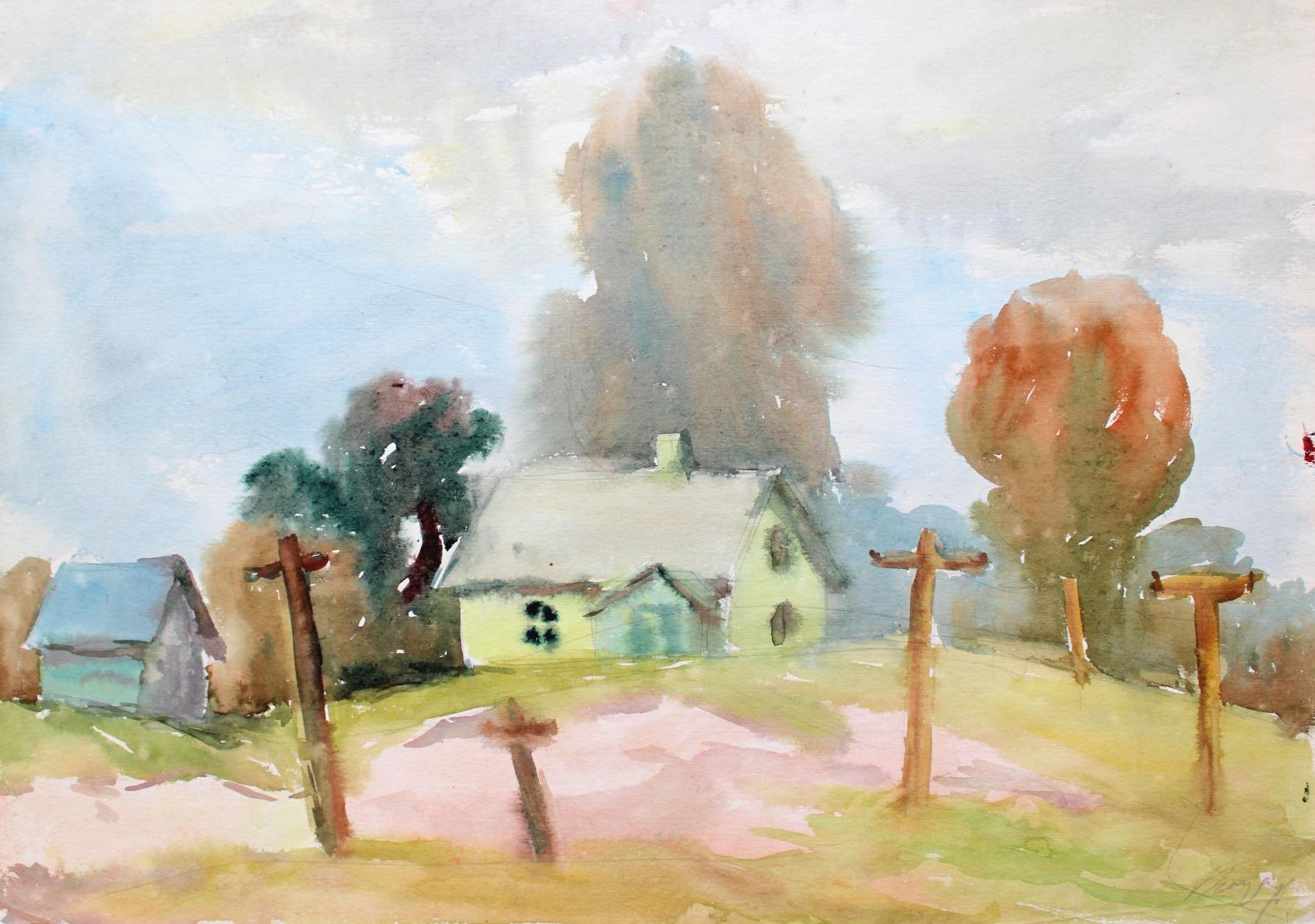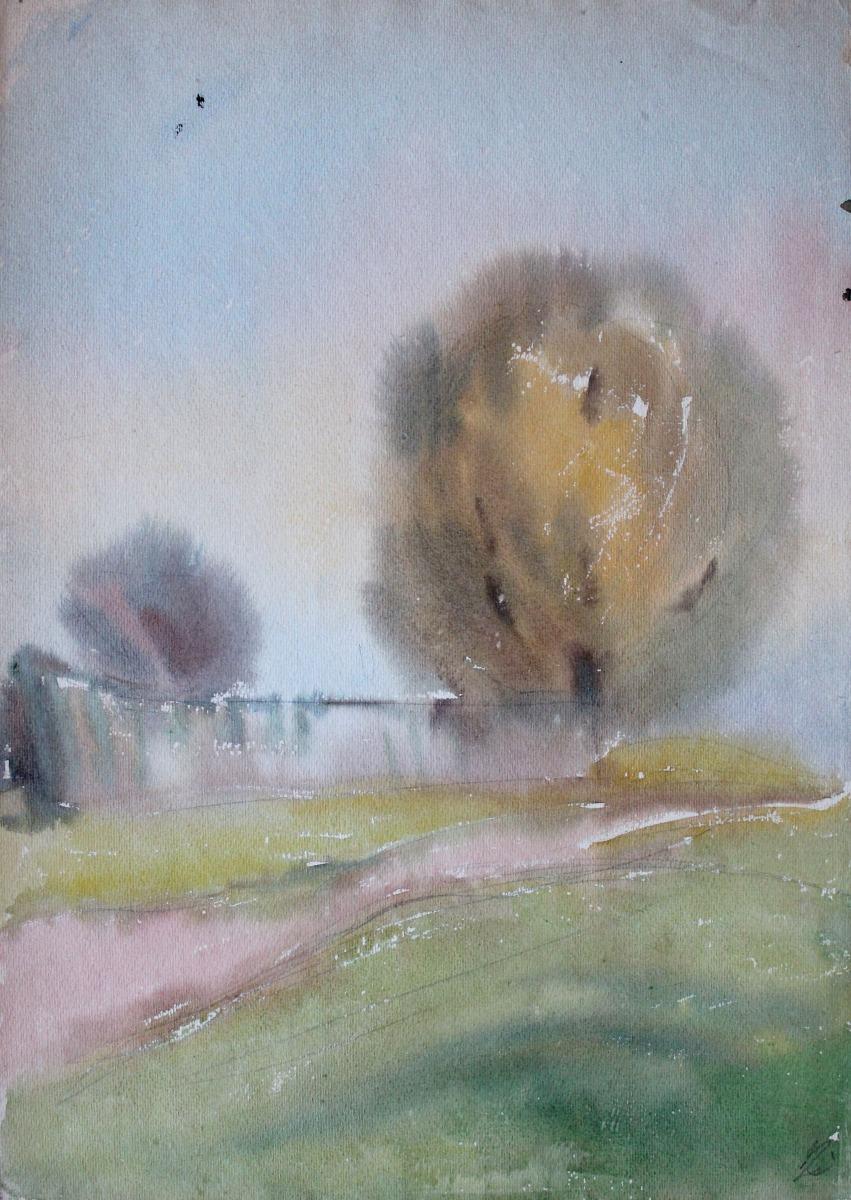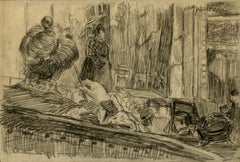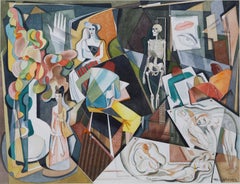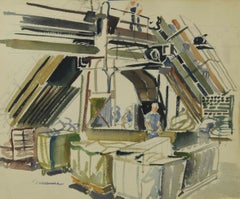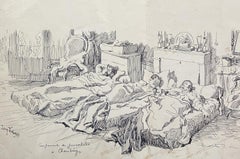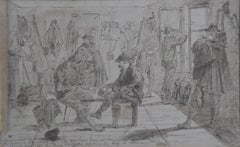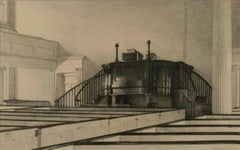
Serenity Congregational Church, Litchfield, CT
View Similar Items
Want more images or videos?
Request additional images or videos from the seller
1 of 11
Stow WengenrothSerenity Congregational Church, Litchfield, CT1951
1951
About the Item
- Creator:Stow Wengenroth (1906 - 1978, American)
- Creation Year:1951
- Dimensions:Height: 13.5 in (34.29 cm)Width: 21.5 in (54.61 cm)
- Medium:
- Movement & Style:
- Period:
- Condition:Slight sun staining visible in detail photograph of the signature. Very minor. Attractively framed in a balck wood frame with OP3 Acrylic for UV light filtration.
- Gallery Location:Fairlawn, OH
- Reference Number:Seller: FA114161stDibs: LU1405776841
About the Seller
5.0
Recognized Seller
These prestigious sellers are industry leaders and represent the highest echelon for item quality and design.
Platinum Seller
These expertly vetted sellers are 1stDibs' most experienced sellers and are rated highest by our customers.
Established in 1978
1stDibs seller since 2013
711 sales on 1stDibs
Typical response time: 1 hour
Associations
International Fine Print Dealers Association
More From This SellerView All
- Loge de Theatre (Preliminary study for a painting)By Charles DufresneLocated in Fairlawn, OHLoge de Theatre (Preliminary study for a painting) Graphite on paper Signed in pencil lower left Annotated with color notations by the artist (see phot...Category
1910s Impressionist Interior Drawings and Watercolors
MaterialsGraphite
- The ModelBy William C. GrauerLocated in Fairlawn, OHThe Model Watercolor on paper, c. 1930 signed lower right (see photo) Condition: Excellent A few bits of adhesive residue verso Colors fresh and unfaded Housed in a Marin style metal gilt frame Sheet size: 19 1/4 x 25 1/4 inches Frame size: 30 x 35-1/2 x 1-1/2 inches A major example of the artist's cubist watercolors Provenance: Estate of the artist By decent to his daughter Gretchen Realted to a watercolor illustrated in William H. Robinson and Christine Fowler Shearer, "Against the Grain: Modernism in the Midwest," American Art Review Vol. XXII, no. 4 (August 2010), page 86 William C. Grauer (1895-1985) William C. Grauer (1895-1985) was born in Philadelphia to German immigrant parents. After attending the Philadelphia Museum School of Industrial Art, Grauer received a four year scholarship from the City of Philadelphia to pursue post graduate work. It was during this time that Grauer began working as a designer at the Decorative Stained Glass Co. in Philadelphia. Following his World War I service in France, Grauer moved to Akron, Ohio where he opened a studio in 1919 with his future brother-in-law, the architect George Evans...Category
1930s American Modern Interior Drawings and Watercolors
MaterialsWatercolor
- Post Office, New YorkBy Robert HallowellLocated in Fairlawn, OHPost Office, New York Watercolor on paper, c. 1930 Signed with the Estate stamp lower left (see photo) Illustrated: Marbella Gallery, Robert Hallowell (188...Category
1930s Abstract Impressionist Interior Drawings and Watercolors
MaterialsWatercolor
- Sammy Lee Sleeping IIBy Sedrick HuckabyLocated in Fairlawn, OHSammy Lee Sleeping II Graphite on sketchbook paper, 2007 Signed by the artist in pencil lower right: "Sedrick Huckaby" (see photo) Condition: Excellent Sheet size: 9 x 12 inches Fram...Category
21st Century and Contemporary Contemporary Interior Drawings and Waterco...
MaterialsGraphite
- Outgoing Fog (South Bristol, Maine)Located in Fairlawn, OHOutgoing Fog Watercolor on paper, 1976 Signed by the artist lower left Painted in South Bristol, Maine Condition: Excellent Watercolor size: 15 x 22 7/8 inches Frame size: 20 x 30 inches (aprox.) Florian...Category
1970s Realist Landscape Drawings and Watercolors
MaterialsWatercolor
- untitled (Hillside in Spring)By William C. GrauerLocated in Fairlawn, OHuntitled (Hillside in Spring) Gouache on paper, c. 1965 Signed with the estate stamp lower right Provenance: Estate of the artist by decent William C. Grauer (1895-1985) was born in Philadelphia to German immigrant parents. After attending the Philadelphia Museum School of Industrial Art, Grauer received a four year scholarship from the City of Philadelphia to pursue post graduate work. It was during this time that Grauer began working as a designer at the Decorative Stained Glass Co. in Philadelphia. Following his World War I service in France, Grauer moved to Akron, Ohio where he opened a studio in 1919 with his future brother-in-law, the architect George Evans...Category
1960s Realist Landscape Drawings and Watercolors
MaterialsGouache
You May Also Like
- Louis Tinayre (1861-1942) An encampment of journalists, signed drawingLocated in Paris, FRLouis Tinayre (1861-1942) An encampment of journalists in Chambéry, signed and titled lower left "Campement de journalistes à Chambéry" Ink on paper In quite good condition, a a visible vertical fold in the centre, some stains and foxings 21 x 29 cm Framed : 33.7 x 45.5 cm Louis Tinayre's background and adventurous life obviously shed light on this humorous and detailed scene. He shows a remarkable sense of observation, capturing as a journalistic illustrator this scene of extraordianarian life. We don't know for the moment why these journalists had to improvise a camp, probably in a hotel room. No doubt it was to cover a trial or a sensational news item that had filled all the hotels in the city with journalists who had flocked for the occasion. In any case, what interests Tinayre as an almost ethnographic observer is this camp of journalists, of which he makes a tender and comical scene. One understands him better when one knows how he could be fascinated in the same way by the territories of Madagascar, the North Pole or the Far West that he painted and drew. Louis Tinayre was born on 14 March 1861 in Neuilly-sur-Seine. His mother, Victoire Tinayre, was a teacher and a member of the International Workers' Association. Louis was the son of a Communard couple. His father, Jean Joseph, known as Jules Tinayre (Issoire 1821 - Paris 1871) was shot during the Bloody Week. His mother, Victoire Tinayre, fled with her children. Louis was the first to be sent to Hungary, and the rest of the family (including his brother Julien) joined him there later. He studied Fine Arts at the Hungarian University of Fine Arts in Budapest. Returning to Paris in 1880 (after the amnesty), Louis Tinayre assiduously frequented Le Chat noir, where he met the positivists and Adèle Jacomet (Buenos Aires 1867-1946), whom he married in 1888. He became an animal painter and press illustrator and was sent by Le Monde Illustré to cover the second expedition to Madagascar (then under French protectorate) in 1895. He stayed there, fascinated, for six months and produced numerous drawings and photographs. Back in France, he created eight 5 x 4 meters dioramas presented at the National and Colonial Exhibition in Rouen in 1896. He returned to Madagascar in 1898 to prepare the creation of a giant panorama representing the surrender of Antananarivo in 1895. The Malagasy pavilion at the 1900 Universal Exhibition in Paris allowed him to admire the dioramas (on the ground floor) and the panorama (on the first floor). On his second trip, Tinayre took a Lumière cinematograph with him to document the daily life of the Malagasy people, no doubt to facilitate the design of the vast panorama. These short films were donated to the Cinémathèque française in 2009 by his grandson, Alain Tinayre. One of the admirers of Tinayre's drawings, watercolours, paintings and photographs at the Universal Exhibition was Prince Albert I of Monaco: from 1901 onwards, Tinayre accompanied him on his hunts, painting scenes in North Africa, Russia, the Far West (Wyoming) and the North Pole. Tinayre, the official painter of the Prince's scientific expeditions, left his name to a glacier. Together with the painter Alexandre Jean-Baptiste Brun, he painted the four murals in the large amphitheatre of the Oceanographic Institute in Paris. Louis Tinayre painted the figures while Alexandre Brun...Category
1890s Realist Interior Drawings and Watercolors
MaterialsInk
- Episode of the Franco-Prussian war of 1870, a cantonment of soldiers, drawingLocated in Paris, FRFrench School 19th Century Episode of the Franco-Prussian war of 1870, a cantonment of soldiers during the siege of Paris Pen and brown ink on paper 15 x 23 cm Annotated on the lower...Category
1870s Realist Interior Drawings and Watercolors
MaterialsInk
- Church InteriorBy Ray QuigleyLocated in Buffalo, NYA modern illustration by American artist Ray Quigley depicting two men inside of a church.Category
1950s Realist Figurative Drawings and Watercolors
MaterialsGouache, Illustration Board, Ink
- Man sitting in the studio - Thinking about art -Located in Berlin, DEAdolph Eduard Otto von Faber du Faur (1828 Ludwigsburg - 1901 Munich). Man sitting in the studio. Watercolour painting, 43 x 27 cm (visible size), 73 x 53 cm (frame), monogrammed at lower right, estate stamp. Upper right corner neatly repaired, small tear in the wall to the left of the sitter. - Thinking about art - About the artwork The sitter, an elderly man, is seated in a studio on a pedestal reminiscent of an academy hall. The earthy, dark tones give the scene a weighty quality. The lightest tones are found in the incarnate parts of the figure, which do not stand out from the other colours of the picture, but are linked to them. As a result, the sitter's face is both part of and the highlight of the colour references in the picture. The colour of the sitter's skin is reflected in his pink coat, while his white-grey hair matches the colour of the wall next to him. This almost monochrome wall surface, in turn, is connected across the portrait to the framed picture standing on the floor, which seems to have been erased by this correspondence with the empty wall surface. Through the palette, which is positioned directly behind the sitter's head, the reference to painting, which is already given by the studio space, is explicitly linked to the sitter, who thus seems to be contemplating the question of the meaning of art. This raises the question of whether Faber Du Faur, who had become lonely in his old age, might have painted a self-portrait here in his later years. In addition to the studio setting, the sitter's explicit reference to the palette and the fact that the picture was part of his estate, the only summary elaboration of the body suggests a self-portrait, while the representation of the face is concretised with the wide-open eyes typical of a self-portrait. This concentration on the face gives the impression of the artist's melancholy introspection, captured by the palette and related to the meaning of painting, whose dark character is reinforced by the concealment of the palette hanging on the right of the picture in the light tones so characteristic of Faber Du Faur. In the course of this resignation, Faber du Faur advises his son Hans, who has also become a painter: "Promise me one thing: never move to Munich, they'll kill you here!" Whoever the sitter may be, the references to painting make the portrait a resigned self-contemplation by Faber Du Faur, focused on art. About the artist After leaving school, Otto Faber du Faur entered the service of the Württemberg army, at the same time cultivating his artistic talent. In 1851, on the recommendation of his father Christian Wilhelm, who was himself a battle painter, he spent six months in Munich as an apprentice to Alexander von Kotzebue. In 1852 he was granted a year's leave of absence from military service to study battle painting in the studio of Adolphe Yvon...Category
1890s Realist Portrait Drawings and Watercolors
MaterialsWatercolor
$826 Sale Price20% Off - Self-portrait - Homo nudus -Located in Berlin, DEBruno Paul (1874 Seifhennersdorf - 1968 Berlin). Self-portrait, c. 1895. Pencil on paper, mounted on cardboard, 53.5 x 35 cm, signed 'Paul' at upper left. - Homo nudus - About the artwork In a mirrored situation, Bruno Paul looks at himself in the picture. While his body, which is the size of the format, is shown in profile parallel to the picture, he turns his head into the picture in order to become aware of himself there, whereby the lighter use...Category
1890s Realist Figurative Drawings and Watercolors
MaterialsPencil
$3,043 Sale Price20% Off - Interior with coffee potBy Leo PrimavesiLocated in Frankfurt am Main, DELeo Primavesi (1871 Cologne - after 1937 ): Interior with coffee pot, 1892, Pen drawing Technique: Pen drawing on Paper Inscription: Signed and dated lower left: "Leo 5. Jan. 1892"...Category
19th Century Realist Interior Drawings and Watercolors
MaterialsPaper
Recently Viewed
View AllMore Ways To Browse
Retro Church Pew
Retro Church Pews
Victorian Shutters
Gothic Pew
Vintage Painted Church Pew
Vintage Church Pew
Gothic Architectural Steeples
Simply Amish
Gustav Klimt Original Print
Rare Record Cover
24 Inch Vanity
Humorous Cartoons
Mid Century Modern Impasto
Bronze Statues Nature
St Chris
Antique Signed Lithograph
Landscape With Philosopher
Automobile Advertising Art
